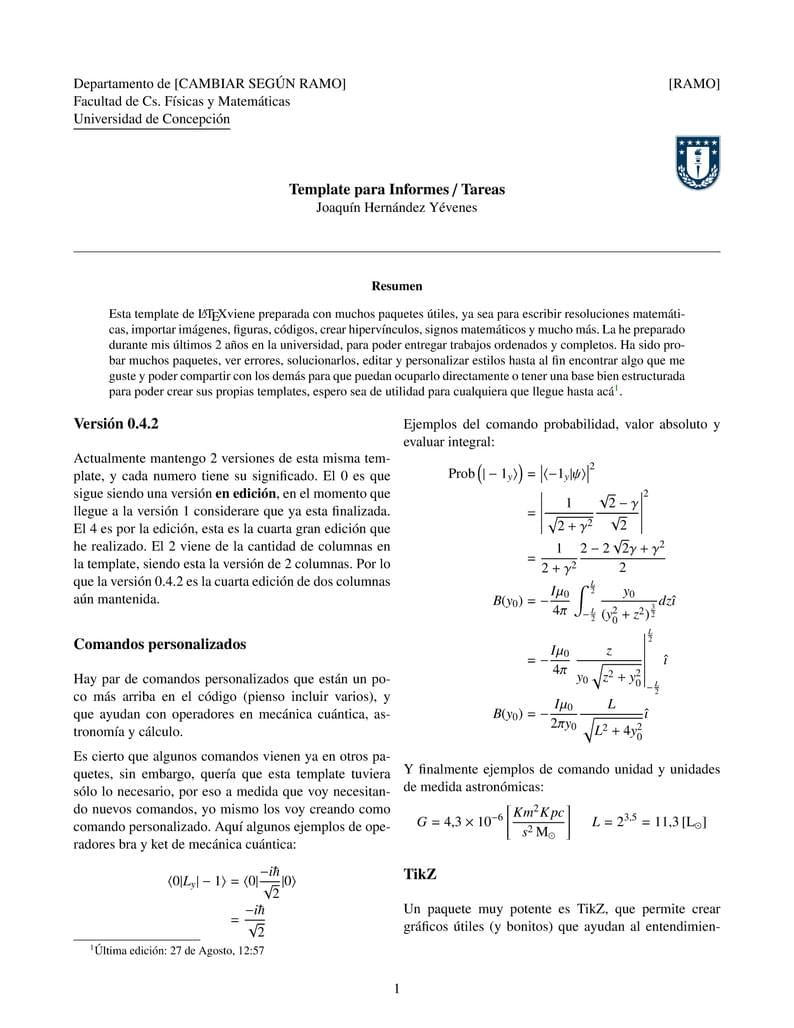overleaf template galleryLaTeX templates and examples — Recent
Discover LaTeX templates and examples to help with everything from writing a journal article to using a specific LaTeX package.

A very simple 3-column poster, with a nice references and logos foot.

A simple, not over-designed, two-column resume and CV template. Derived from AltaCV (v1.6.2). Styled to mimic my own resume, designed in MS Word and originally from a Google Docs template.

Thesis template for OVGU MRCC

Una template preparada para tareas de Matemática, Física, Programación y Astronomía preparada con varios paquetes y configuraciones :) La versión 0.4.2 es de DOS COLUMNAS, para la versión de 1 columna buscar por la 0.4.1 Log cambios: v0.1 - Primera versión básica v0.2 - Se añaden comandos personalizados, TikZ, lstlistings y Minted. v0.3 - Se añaden nuevos paquetes, resumen, footnotes, comandos personalizados y se editan parámetros. v0.4.2 - Se añade bibliográfica MNRAS editada para el formato de informes además arreglar typos. Se crea esta versión de 2 columnas, donde se ajustan parámetros para que todo funciones debidamente.

This is a proposal template created by Raja Sher Afgun Usmani with help of R. Afzal & Oussama Raach, We have kept the guidelines from Taylor's university Malaysia in mind. Please read comments in main.tex for further documentation.

Formato de reporte de práctica de laboratorio

Template for PERC 2019 Proceedings

Baby Near is the project created to assist parents to monitor their children in open or closed environments, mainly with crowds, such as supermarkets, malls, playgrounds, among others. The prototype consists of two ends that communicate with each other by Bluetooth, one with a smartphone and another with an Arduino. If the distance between them is highier than the one set by the parents, the cellphone device emits sounds, vibrations and changes on screen that alert the parent that the distance has been exceeded. In addition, the end of the Arduino also has a short distance electronic tag that can be used by parents to insert information relevant to the child's finder. In this way, the system brings to the parents more speed in the detection of an emergency situation due to the increase of the distance of the child.

This is a template for a PhD Dissertation or Doktorarbeit at FAU (Friedrich-Alexander-Universität Erlangen-Nürnberg). This template is an adaptation of the Dissertate template originally developed for Harvard, Princeton, and NYU by Jordan Suchow. The format and styling are based closely on the requirements by FAU's Dean's Office.
\begin
Discover why over 20 million people worldwide trust Overleaf with their work.